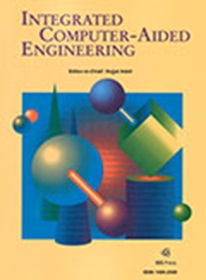用于再制造中可扩展的报废状态监测的物联网框架
IF 5.3
2区 计算机科学
Q1 COMPUTER SCIENCE, ARTIFICIAL INTELLIGENCE
引用次数: 1
摘要
世界范围内产生的废弃电气和电子设备不断增加,近年来,电动汽车电池达到其使用寿命已成为环境和人类健康的一个关键问题。在此背景下,物联网标准和数据生态系统的激增正在推进数据驱动状态监测和再制造的可行性。这对于高价值设备的使用寿命结束后回收到可持续闭环生产系统是特别可取的。低功耗广域网,尽管是相对较新的,但开始被认为是建立在远程通信和可忽略的能源消耗原则基础上的关键技术。虽然LoRaWAN被认为是业界和学术界接受度最高的开放标准,但它的随机访问协议(Aloha)在一定程度上限制了其大规模部署的能力。虽然时隙调度已被证明可以缓解某些可伸缩性限制,但终端节点的约束性质及其面向应用的需求显著增加了时隙网络管理任务的复杂性。为了解决这一问题,本文介绍了一种多智能体网络管理系统,用于再制造终端监控应用中的资源按需分配。它利用LoRa的传播因子正交性和网络范围知识来增加时隙监视设置中服务的节点数量。通过对两个具有代表性的终端节点分布进行仿真,验证和评估了所提出的系统的寿命终止监测,与LoRaWAN的传统操作相比,所实现的网络容量改善范围从75.27%到249.46%。因此,评估了不同基于代理的策略的适用性,并根据不同的应用程序和硬件约束得出了许多经验教训。虽然所提出的研究结果可用于进一步提高所提出模型的可解释性(符合可解释人工智能的概念),但总体框架代表了在再制造的轻量化寿命终止状态监测方面向前迈出的一步。本文章由计算机程序翻译,如有差异,请以英文原文为准。
Internet-of-Things framework for scalable end-of-life condition monitoring in remanufacturing
The worldwide generation of waste electrical and electronic equipment is continuously growing, with electric vehicle batteries reaching their end-of-life having become a key concern for both the environment and human health in recent years. In this context, the proliferation of Internet of Things standards and data ecosystems is advancing the feasibility of data-driven condition monitoring and remanufacturing. This is particularly desirable for the end-of-life recovery of high-value equipment towards sustainable closed-loop production systems. Low-Power Wide-Area Networks, despite being relatively recent, are starting to be conceived as key-enabling technologies built upon the principles of long-range communication and negligible energy consumption. While LoRaWAN is considered the open standard with the highest level of acceptance from both industry and academia, it is its random access protocol (Aloha) that limits its capacity in large-scale deployments to some extent. Although time-slotted scheduling has proved to alleviate certain scalability limitations, the constrained nature of end nodes and their application-oriented requirements significantly increase the complexity of time-slotted network management tasks. To shed light on this matter, a multi-agent network management system for the on-demand allocation of resources in end-of-life monitoring applications for remanufacturing is introduced in this work. It leverages LoRa’s spreading factor orthogonality and network-wide knowledge to increase the number of nodes served in time-slotted monitoring setups. The proposed system is validated and evaluated for end-of-life monitoring where two representative end-node distributions were emulated, with the achieved network capacity improvements ranging from 75.27% to 249.46% with respect to LoRaWAN’s legacy operation. As a result, the suitability of different agent-based strategies has been evaluated and a number of lessons have been drawnaccording to different application and hardware constraints. While the presented findings can be used to further improve the explainability of the proposed models (in line with the concept of eXplainable AI), the overall framework represents a step forward in lightweight end-of-life condition monitoring for remanufacturing.
求助全文
通过发布文献求助,成功后即可免费获取论文全文。
去求助
来源期刊

Integrated Computer-Aided Engineering
工程技术-工程:综合
CiteScore
9.90
自引率
21.50%
发文量
21
审稿时长
>12 weeks
期刊介绍:
Integrated Computer-Aided Engineering (ICAE) was founded in 1993. "Based on the premise that interdisciplinary thinking and synergistic collaboration of disciplines can solve complex problems, open new frontiers, and lead to true innovations and breakthroughs, the cornerstone of industrial competitiveness and advancement of the society" as noted in the inaugural issue of the journal.
The focus of ICAE is the integration of leading edge and emerging computer and information technologies for innovative solution of engineering problems. The journal fosters interdisciplinary research and presents a unique forum for innovative computer-aided engineering. It also publishes novel industrial applications of CAE, thus helping to bring new computational paradigms from research labs and classrooms to reality. Areas covered by the journal include (but are not limited to) artificial intelligence, advanced signal processing, biologically inspired computing, cognitive modeling, concurrent engineering, database management, distributed computing, evolutionary computing, fuzzy logic, genetic algorithms, geometric modeling, intelligent and adaptive systems, internet-based technologies, knowledge discovery and engineering, machine learning, mechatronics, mobile computing, multimedia technologies, networking, neural network computing, object-oriented systems, optimization and search, parallel processing, robotics virtual reality, and visualization techniques.
 求助内容:
求助内容: 应助结果提醒方式:
应助结果提醒方式:


